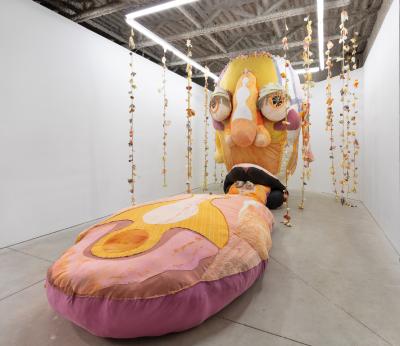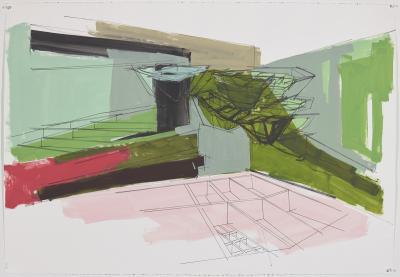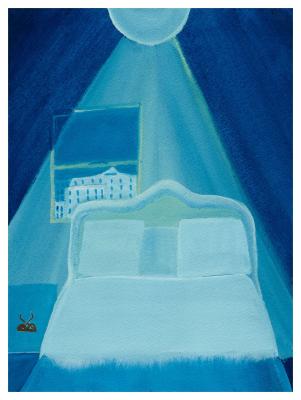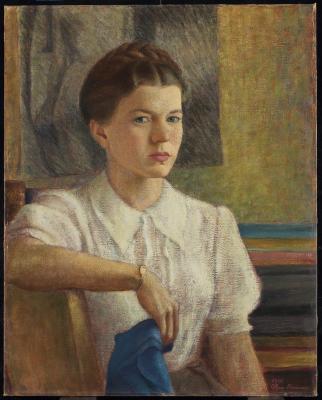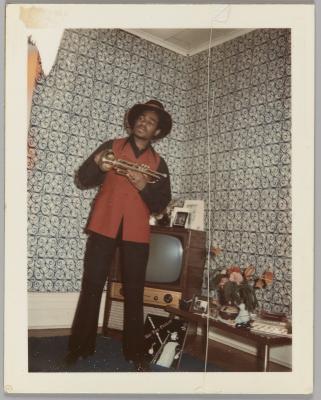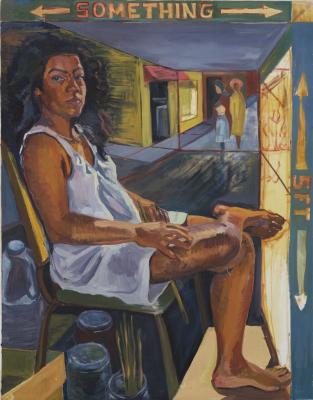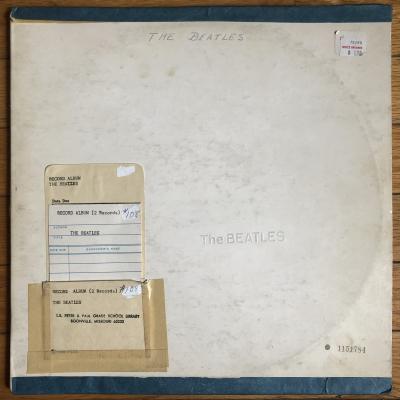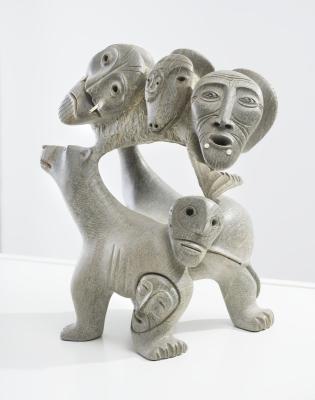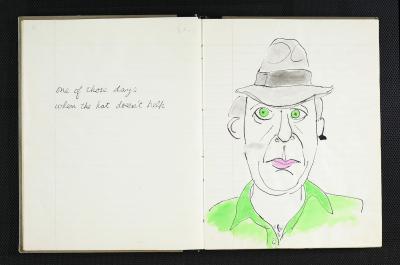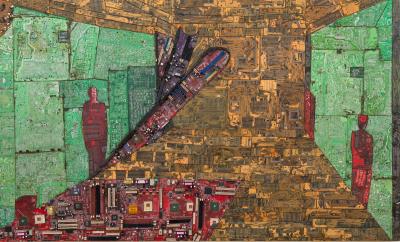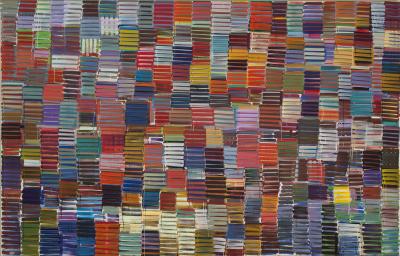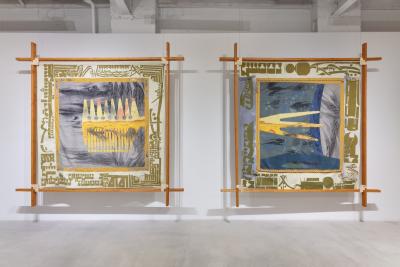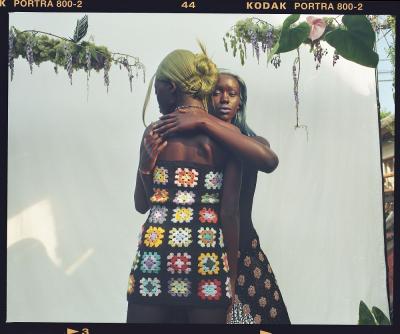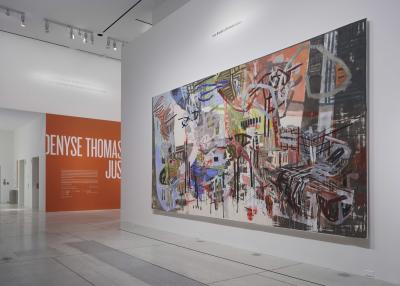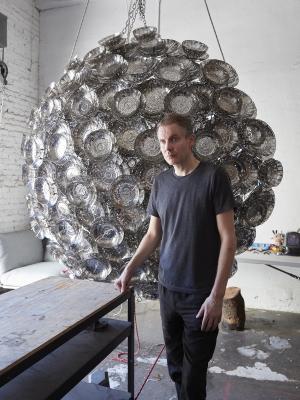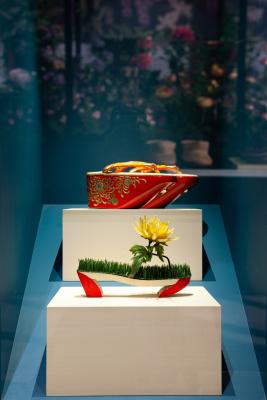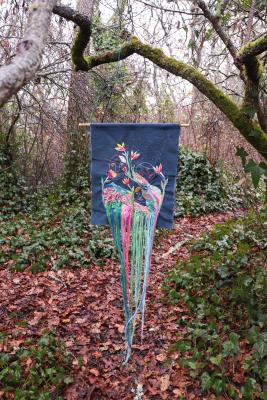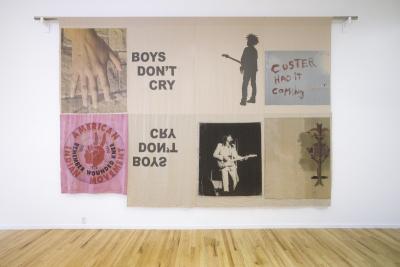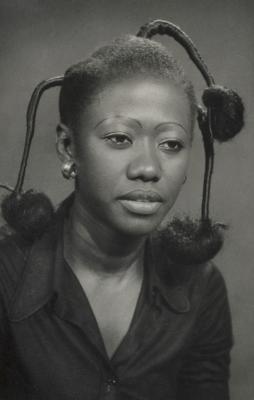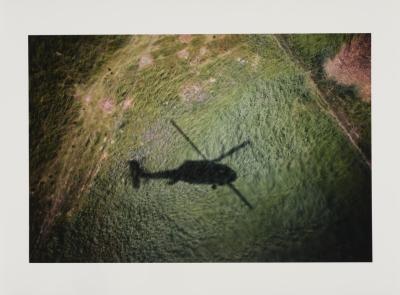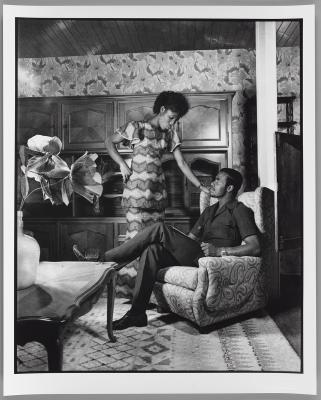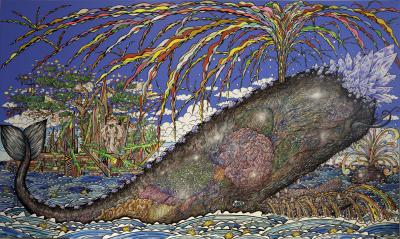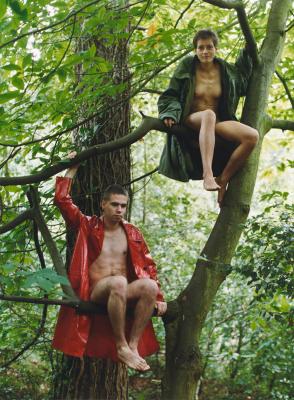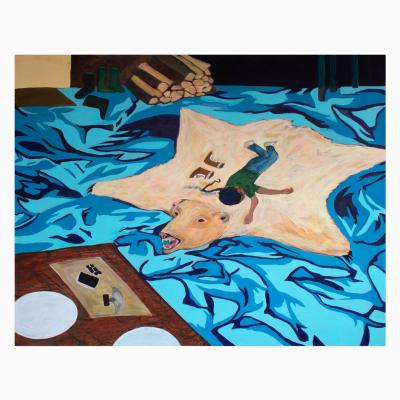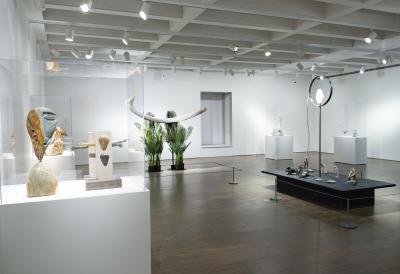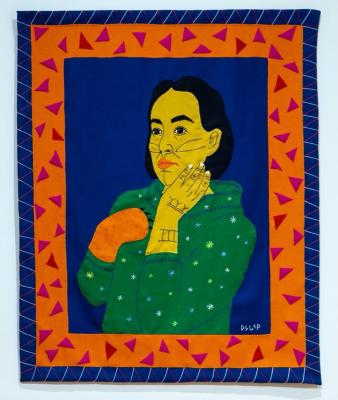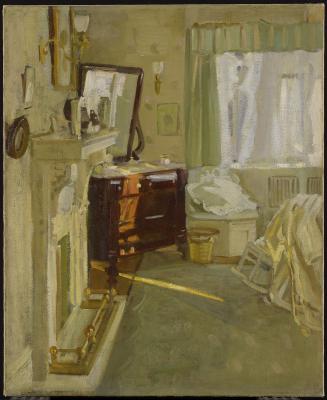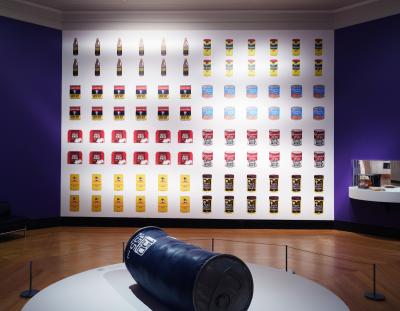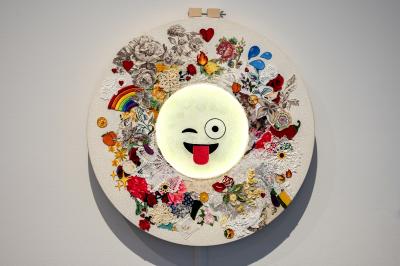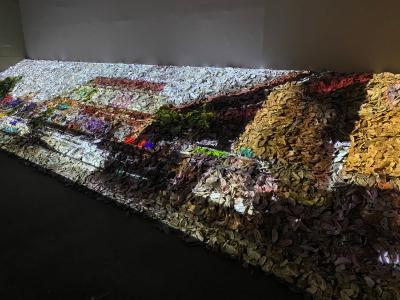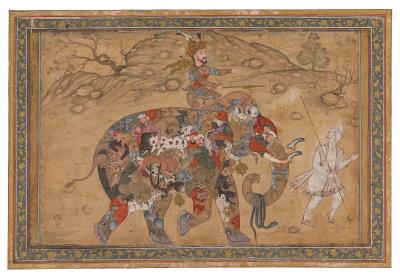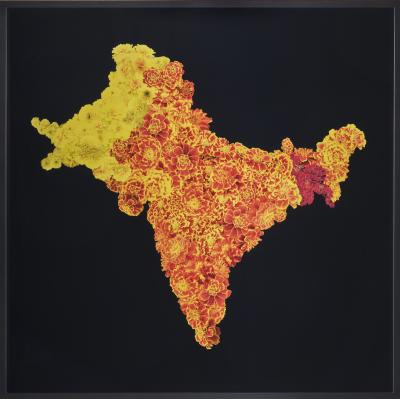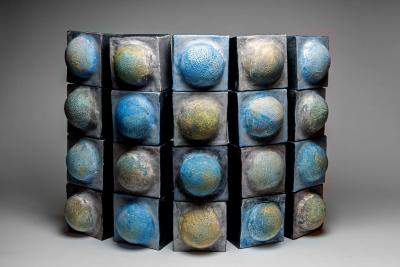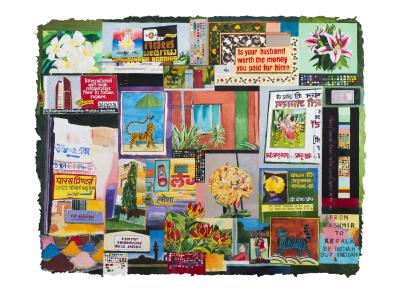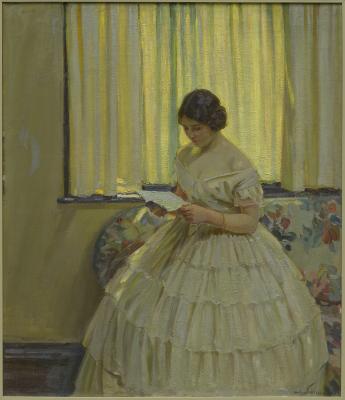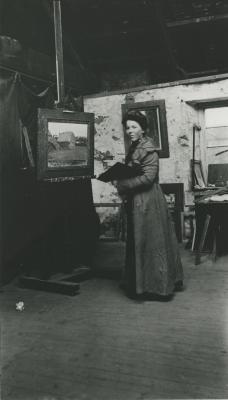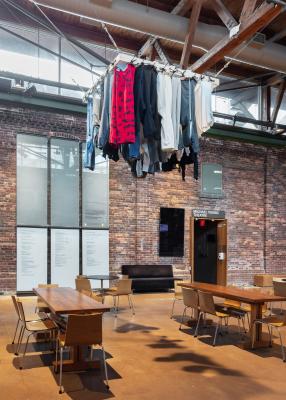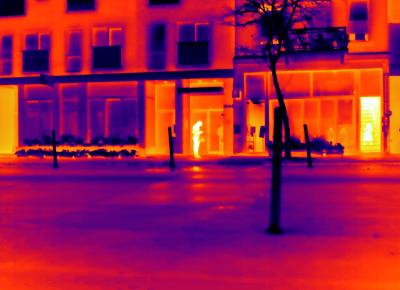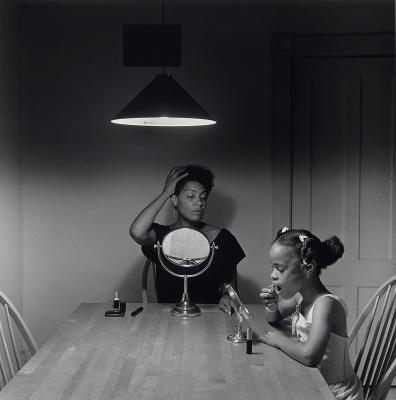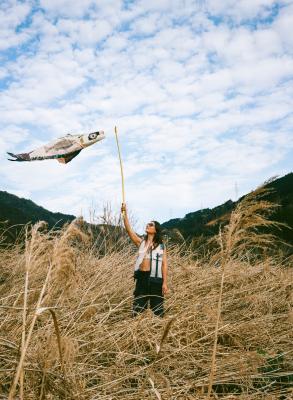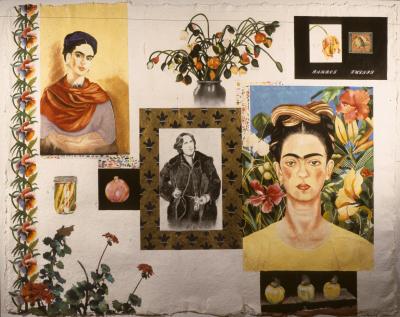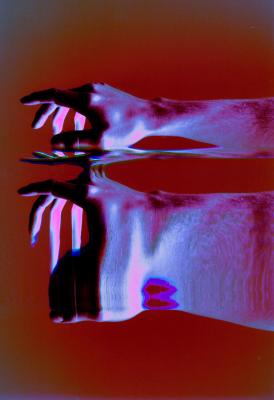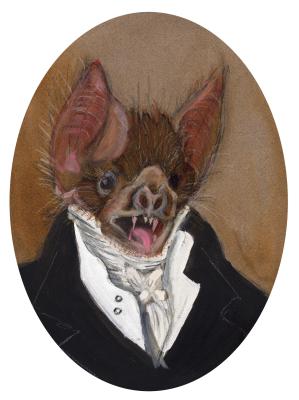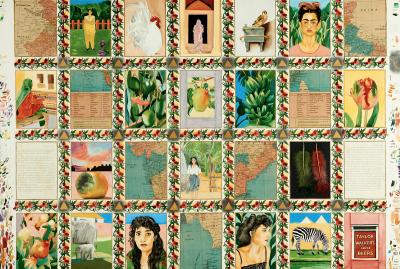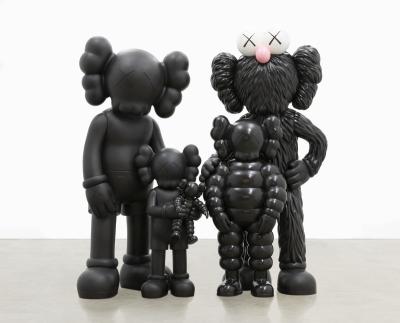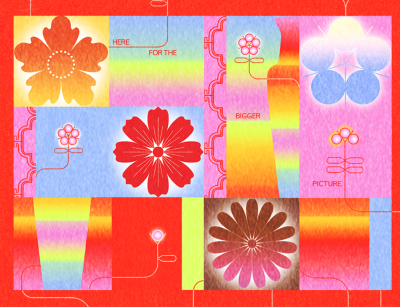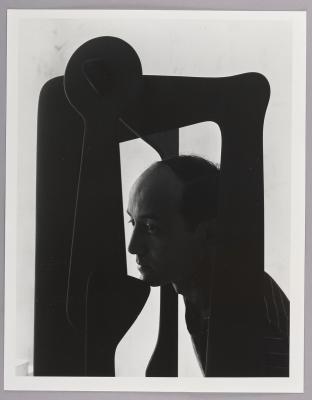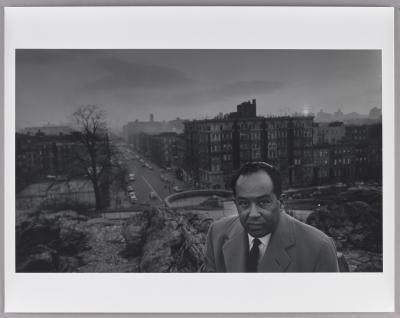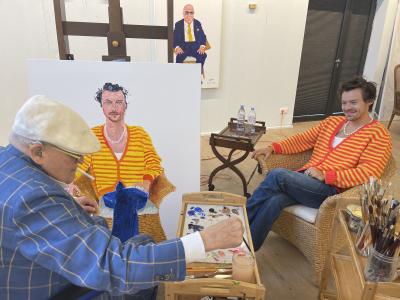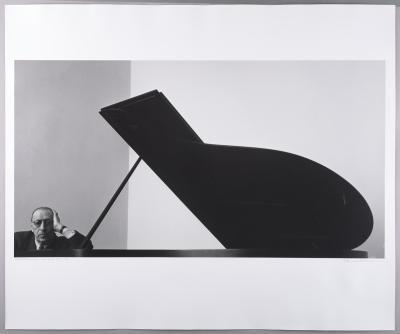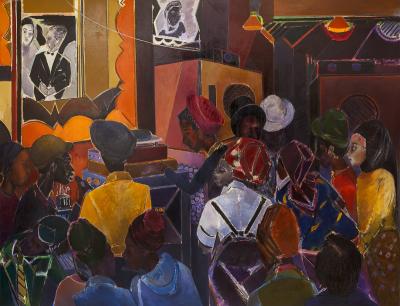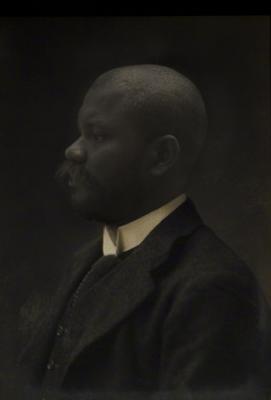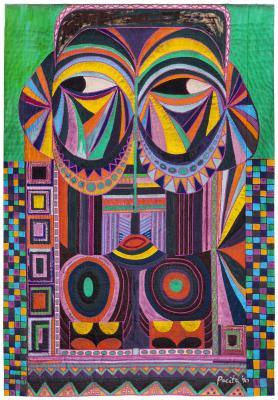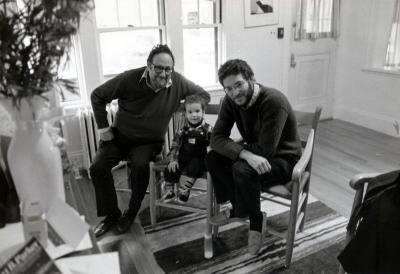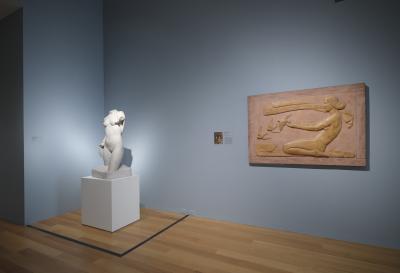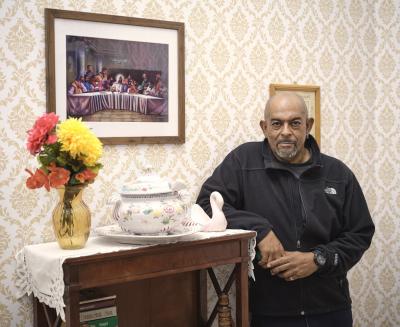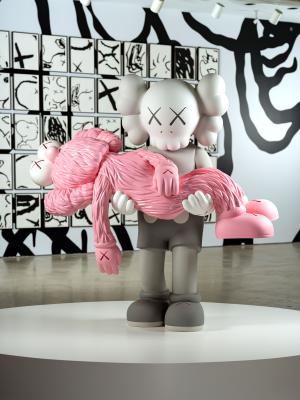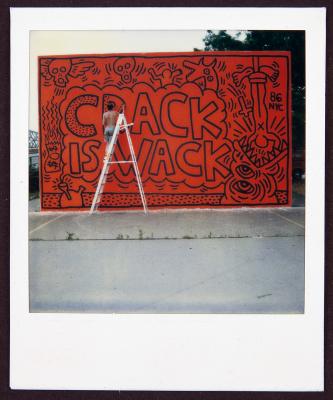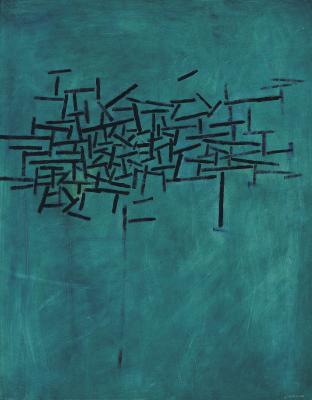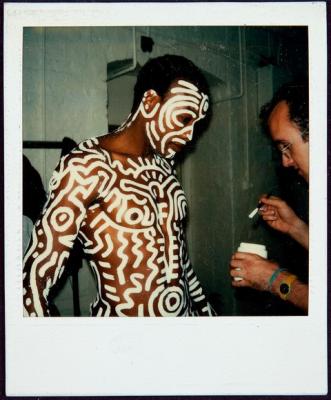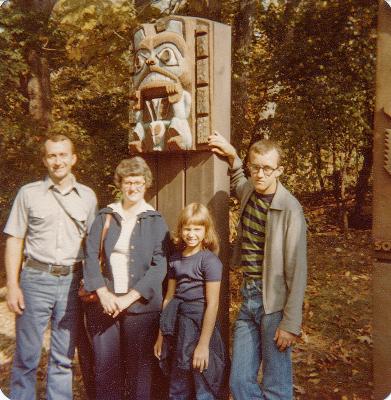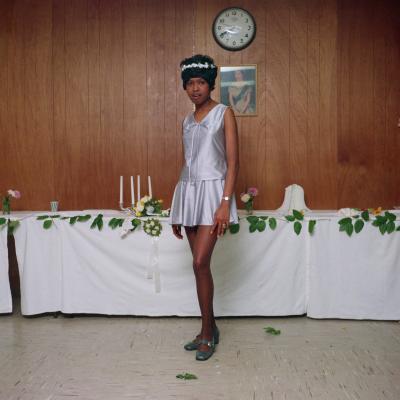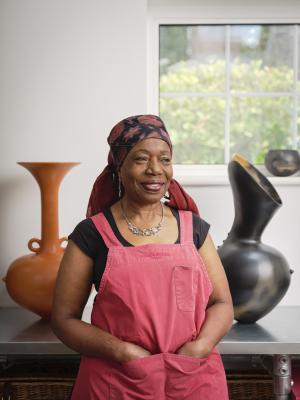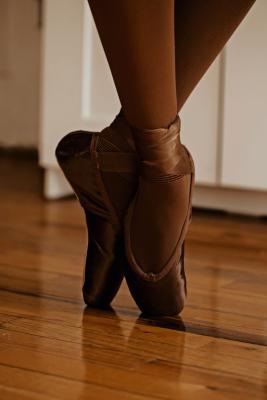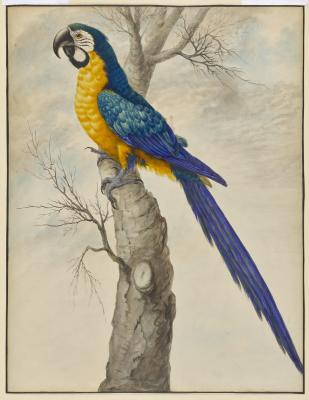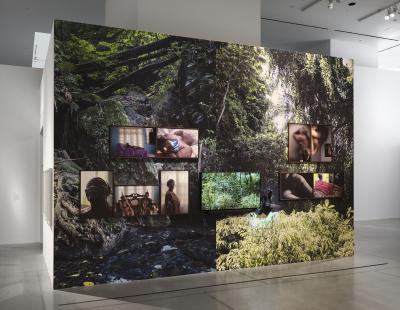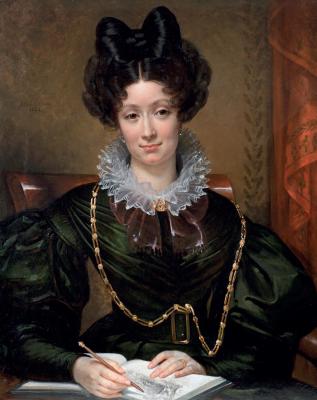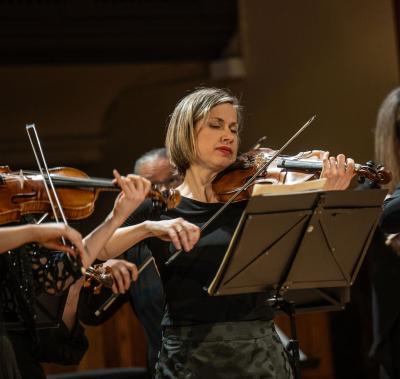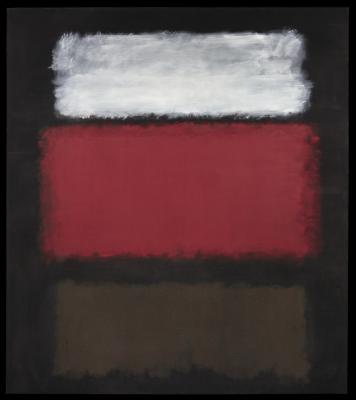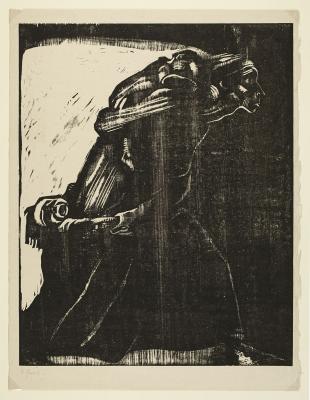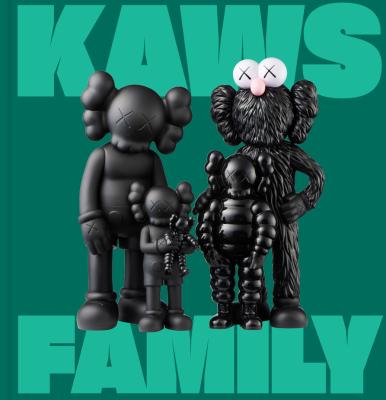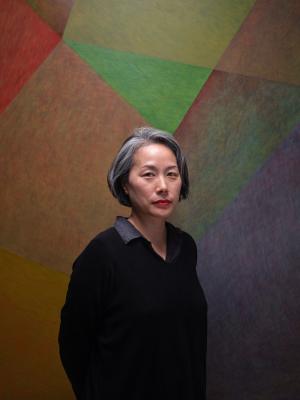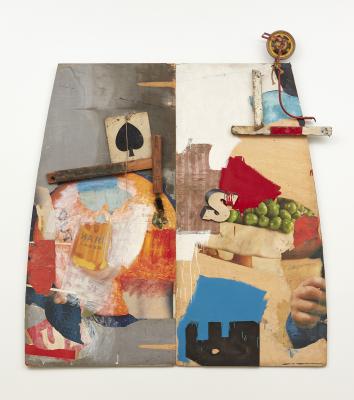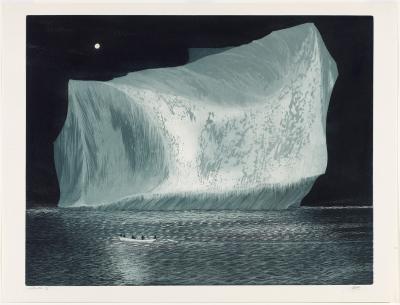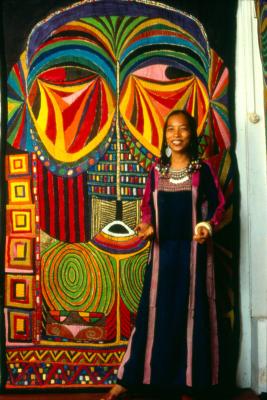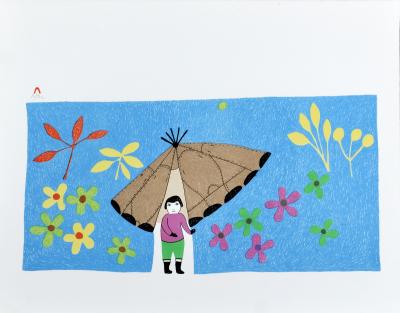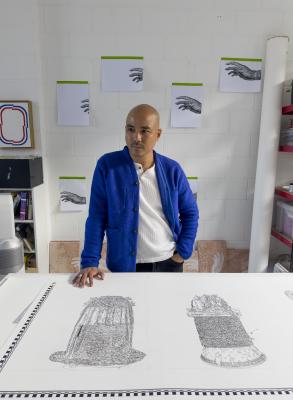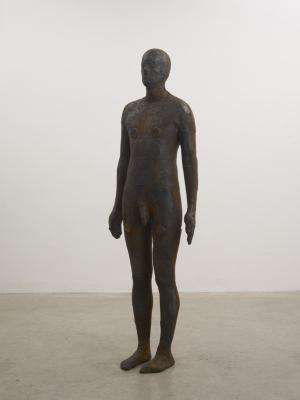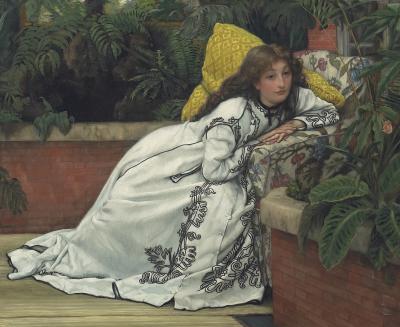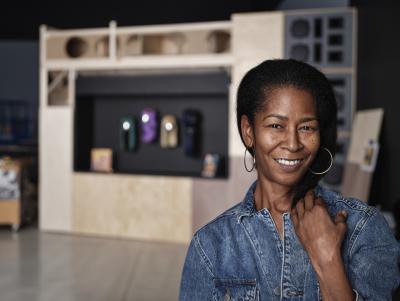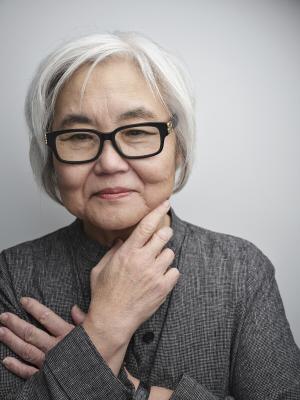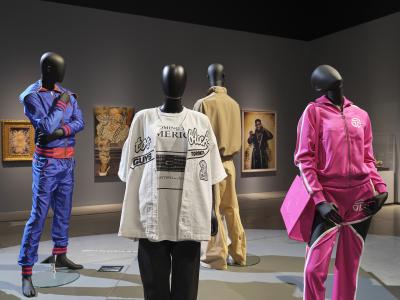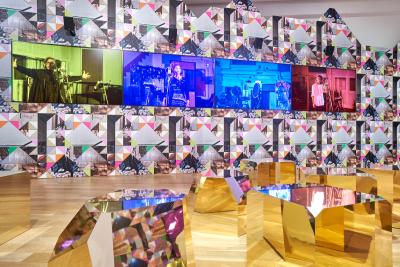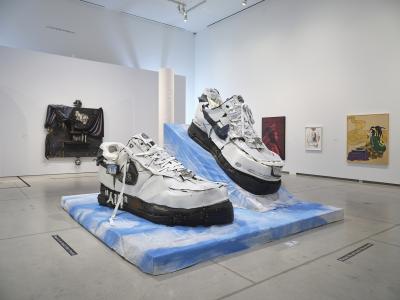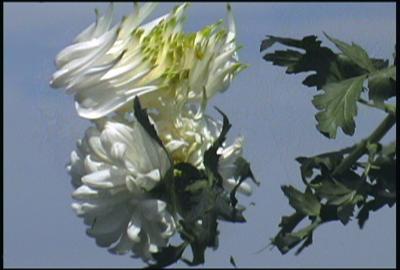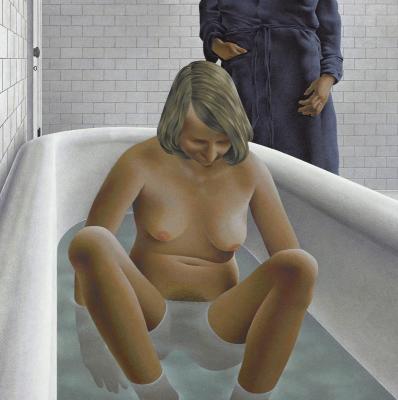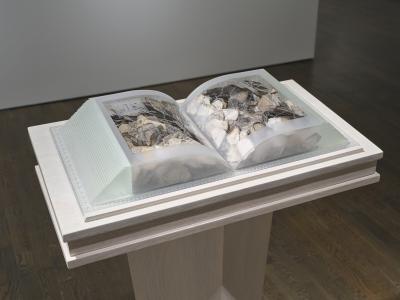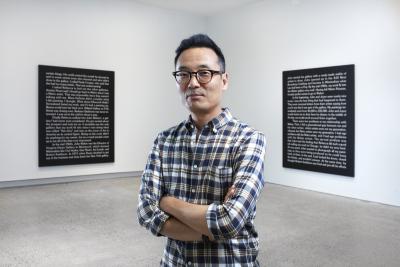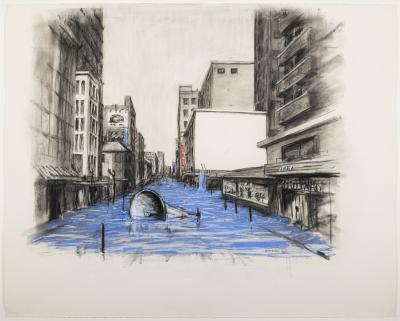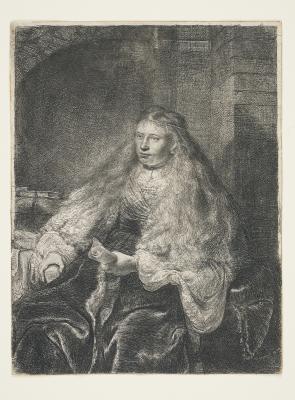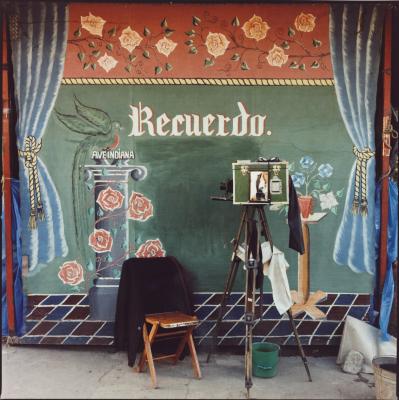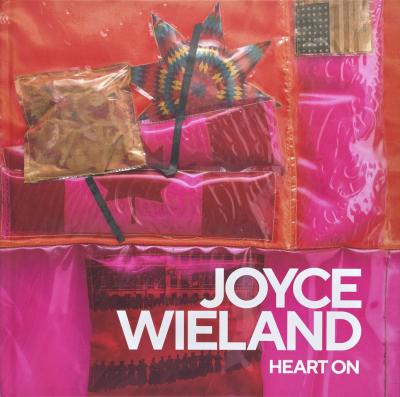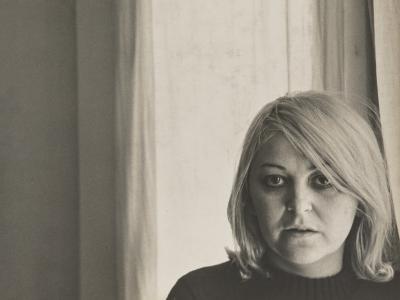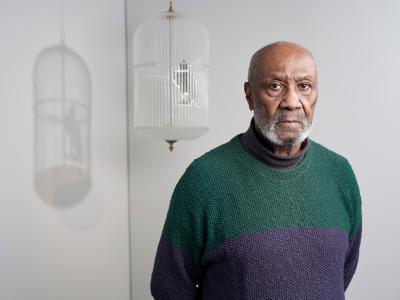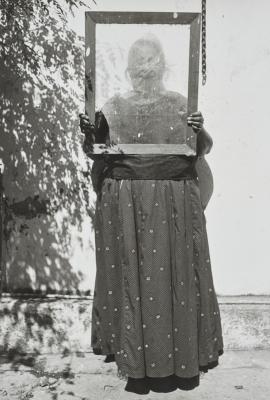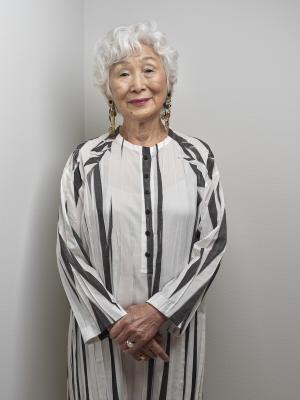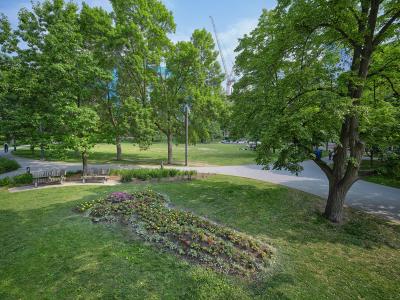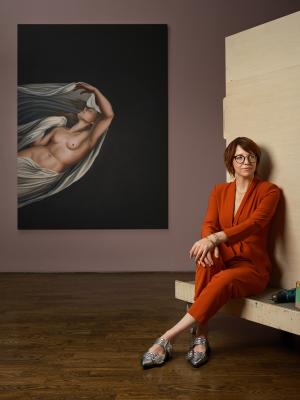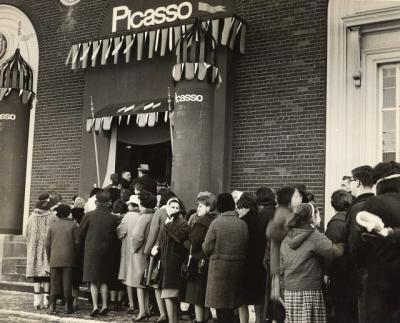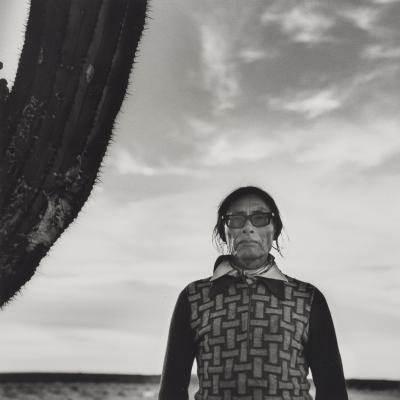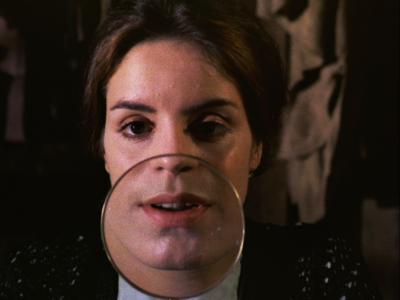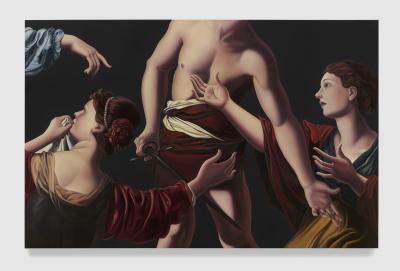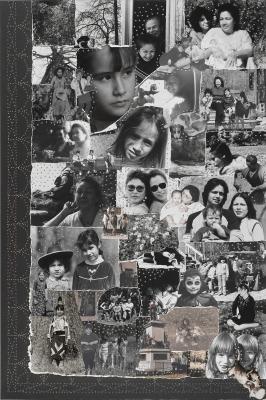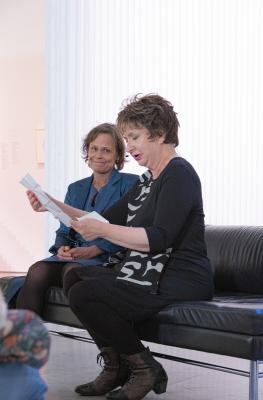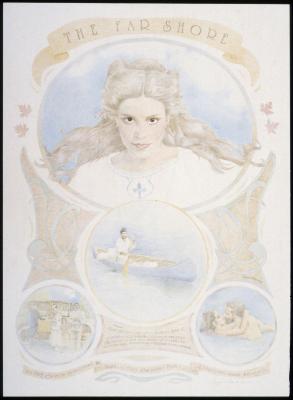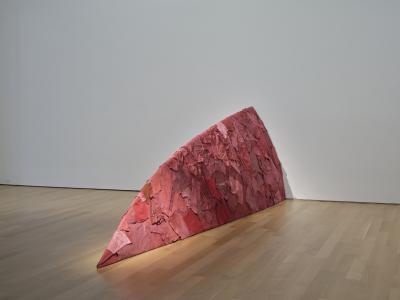Venus of Scarborough Takes a Trip Downtown
Joyce Wieland’s first and only earthwork is recreated in Grange Park
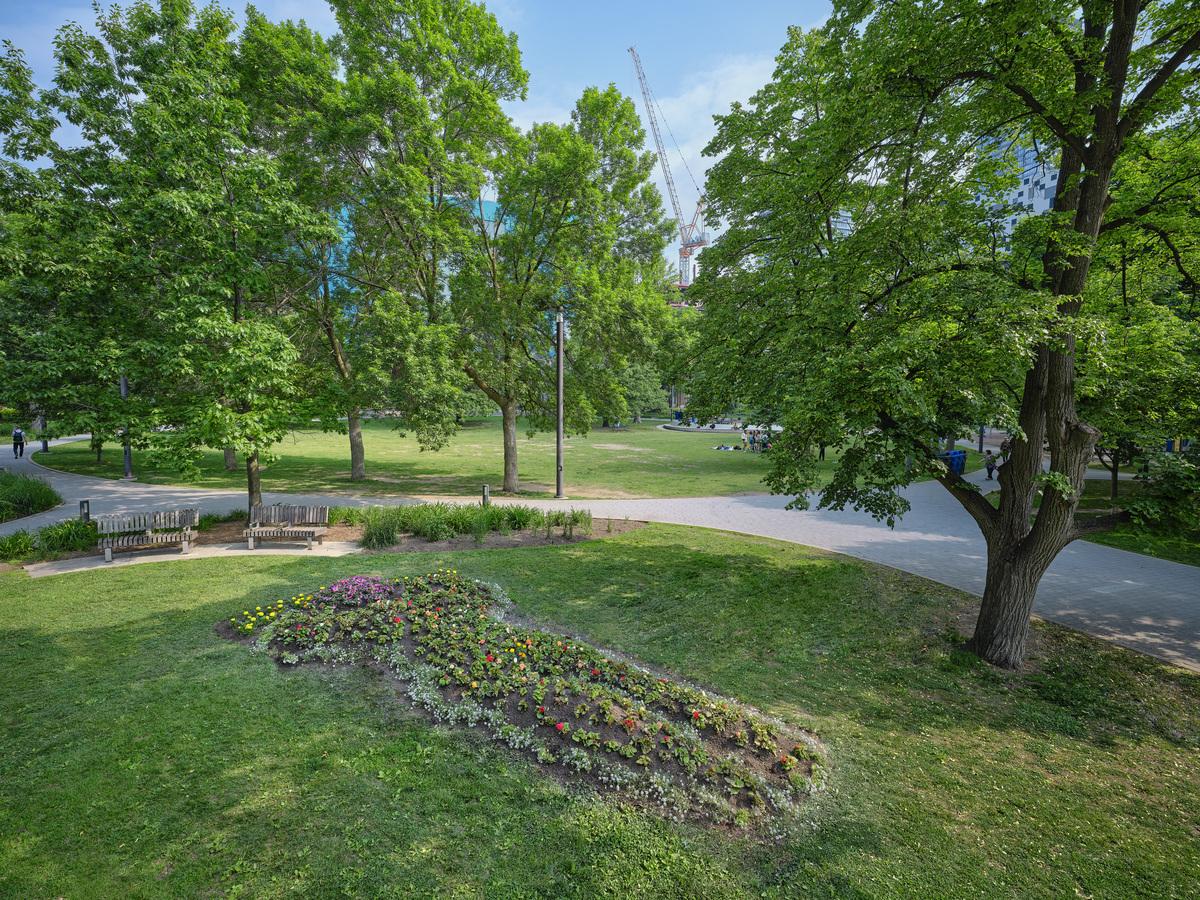
Installation view: Joyce Wieland, Venus of Scarborough, first exhibited 1982; reinstallation in Grange Park, 2025. Photo © AGO.
The exhibition Joyce Wieland: Heart On doesn’t end within the walls of the AGO. If you make your way to Grange Park, located just behind the Gallery, and head south towards the dog park, you’ll find that a goddess-shaped flower bed has bloomed. This flower bed is a recreation of Joyce Wieland’s (1930–1998) flower sculpture Venus of Scarborough (1982) and part of the exhibition.
Now on view at the AGO, Heart On is the first retrospective of Wieland’s work in almost 40 years, co-organized by the AGO and the Montreal Museum of Fine Arts (MMFA), curated by Georgiana Uhlyarik, Fredrik S. Eaton Curator of Canadian Art at the AGO and Anne Grace, Curator of Modern Art at the MMFA. One of Canada’s most prolific artists, Wieland is known for her playful and biting artistry that explores themes such as feminism, ecological devastation, and the complexities of nationhood. Heart On highlights the wide range of mediums Wieland used in her practice including film, textiles, plastic vinyl, and, of course, flowers.
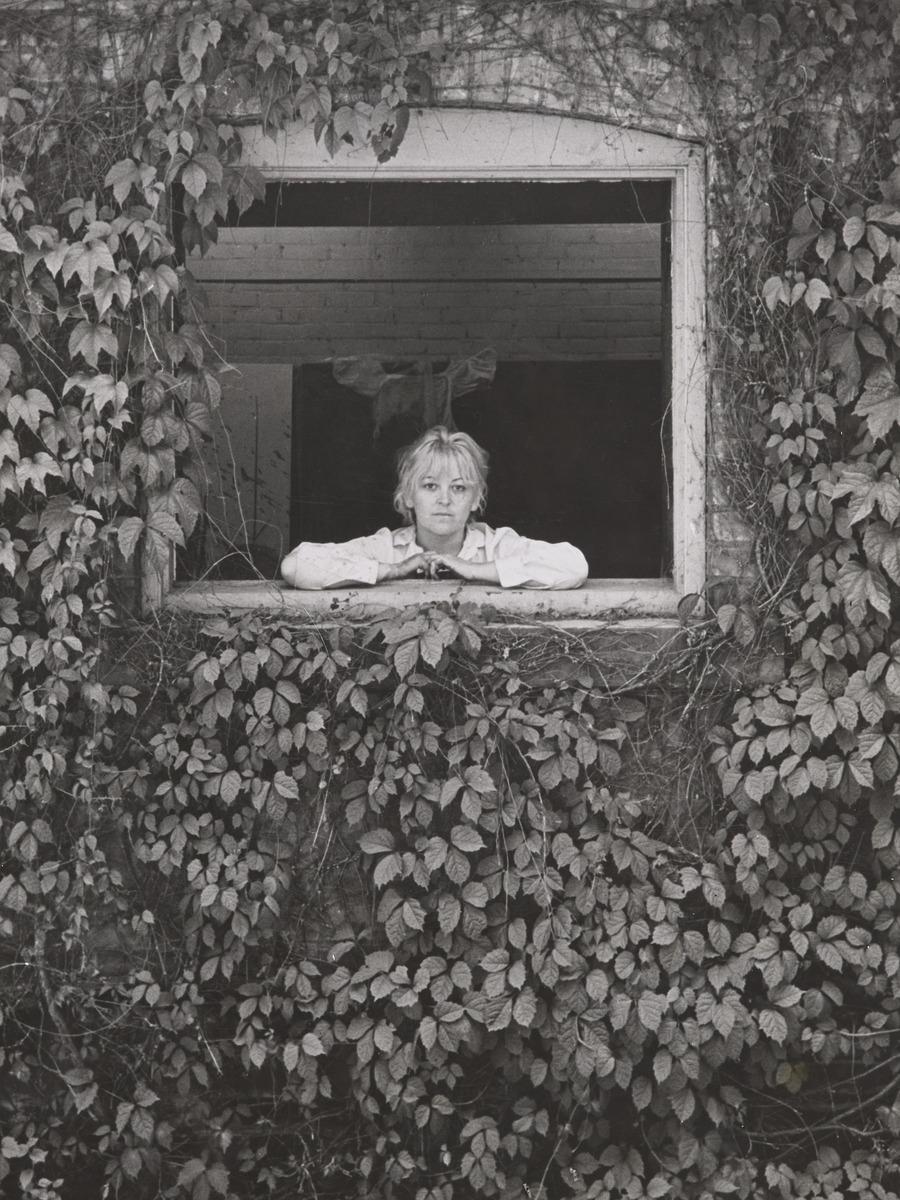
Michel Thomas Henry Lambeth. Joyce Wieland (at window) (detail), c.1960. Gelatin silver print, Overall: 34 x 26 cm. Art Gallery of Ontario. Gift of Av Isaacs, Toronto, 1994. © Estate of Michel Lambeth. 94/447
This summer, the AGO has recreated Wieland’s flower sculpture, originally planted at the Guild Inn near the Scarborough Bluffs. The Roman goddess of love, beauty, sex, fertility, and victory, Venus was a recurring figure in Wieland’s practice.
In the following excerpt from the exhibition catalogue, Renée van der Avoird, the AGO’s Associate Curator of Canadian Art, discusses the impact of Venus of Scarborough.
---
In August 1982, Joyce Wieland planted a flower garden in the shape of a goddess. Begonias, aster, and sweet alyssum formed the low relief of Venus of Scarborough, who lay on her back in a grassy clearing at the Guild Inn estate, on the eastern edge of Toronto. For three months, the Venus grew near the steep bluffs of Scarborough, overlooking Lake Ontario.1 Her hair unfurled in profuse beds of orange and yellow chrysanthemums.
Described as “delightful” and the “perfect anniversary piece”2 in the press, Venus of Scarborough was part of a sculpture exhibition commemorating the fiftieth anniversary of The Guild. The exhibition curator, sculptor Sorel Etrog (1933–2014), invited Wieland to participate along with thirty-four other Canadian and international artists. The Venus, Wieland’s first and only earthwork, was a critical success and reached a level of popularity that pleased her. “I can’t tell you how it was so heartwarming to have put something there that they really loved, that everyone liked,” she noted. “When they came to the Guild Inn, they would ask: ‘where is the lady?’”3
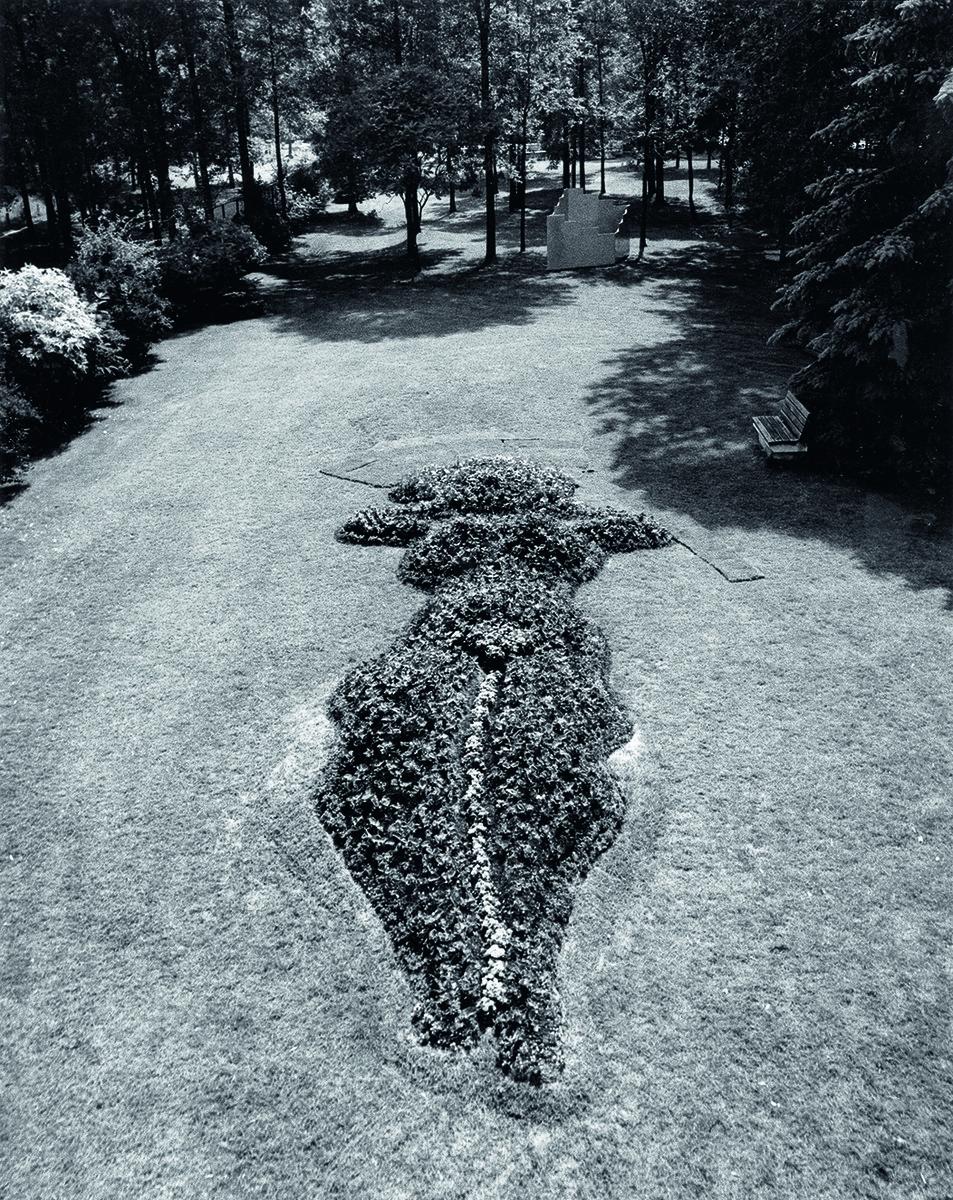
Venus of Scarborough installed at the Contemporary Outdoor Sculpture exhibition at The Guild, curated by Sorel Etrog, 1982. Photo: Jim Chambers
Guild Park is an eccentric space. It contains artist studios, a large inn, and a collection of historic architectural remnants retrieved from Toronto demolition sites, including eight Corinthian columns from an old Toronto Dominion bank that have been repurposed as an outdoor theatre. For the 1982 exhibition, Etrog selected many modernist abstract sculptures that neither responded to the surrounding landscape nor the architectural ornaments scattered across the site. However, Wieland used the grounds of The Guild as her very medium. The Globe and Mail lauded her and one other artist — New York minimalist Carl Andre (1935–2024) — for their ability to “take the facts of the park, work it through their separate artistic ideologies [. . .] and give it back to the Guild, transmuted into a unique response.”4 Cuban-American artist Ana Mendieta (1948–1985) also had work in the exhibition: El Laborinto de Venus, a metre-and-a-half-wide carving in stone — a Venus of her own. Mendieta, however, was not mentioned in the article.
Wieland’s idea for this flowering monument came from her particular sense of environmentalism, which valued growth and nourishment. As opposed to excavating land or setting down a monolithic structure, she planted a flowerbed that offered an ephemeral sensory experience. She made Venus of Scarborough in her characteristic spirit of generosity. The work therefore embodies her deep concerns for humanity and ecology, as well as her attunement to the cyclic patterns of nature. As Lucy Lippard suggests, the sculpture epitomizes the feminine empathy between earth and body that underpins much feminist art.5
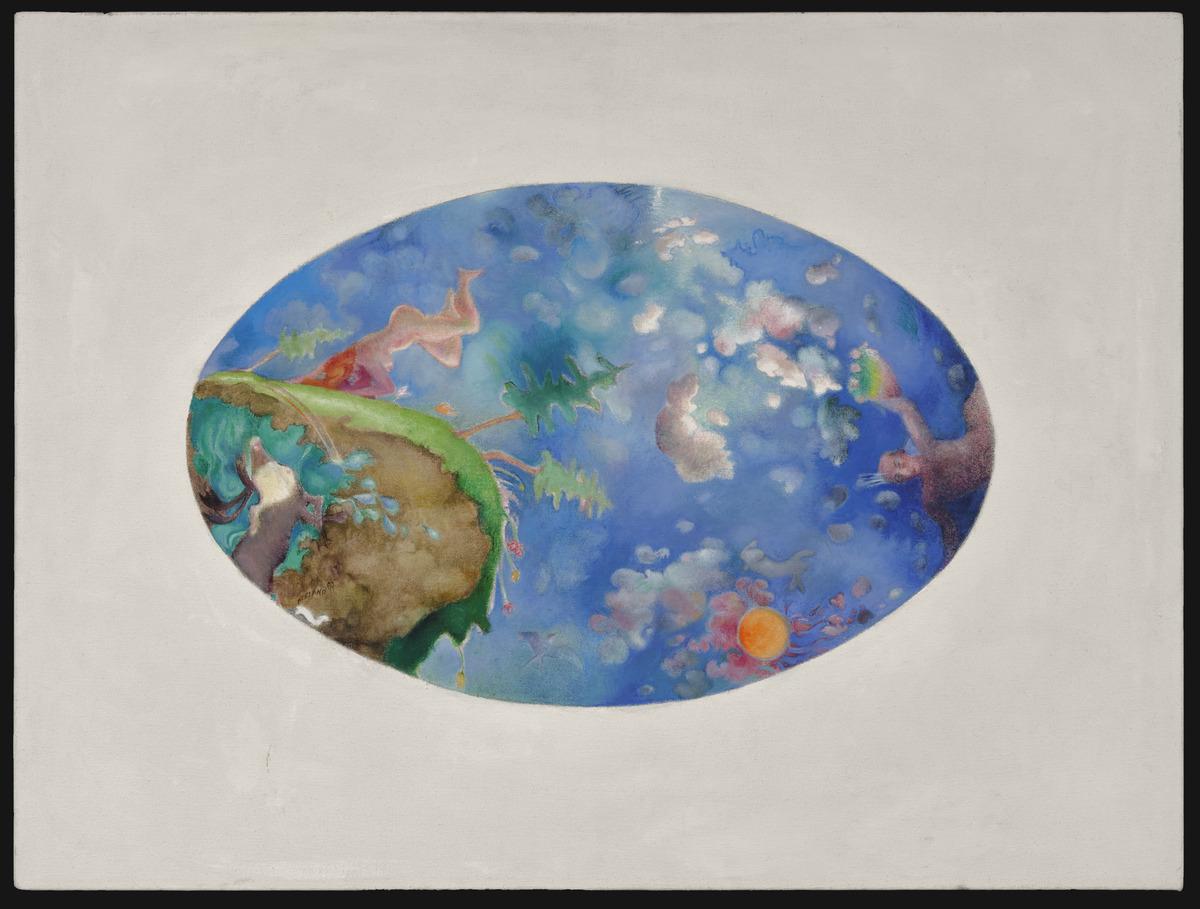
Joyce Wieland. The End of Life as She Knew It, 1982. Oil on canvas, 62.23 x 82.92 cm. Private Collection © National Gallery of Canada, Ottawa.
Wieland’s drawings from the early 1980s embody these ideas, too, notably the works from her The Bloom of Matter series. These jewel-like, coloured-pencil drawings represent what has been referred to as the artist’s “private mythology.”6 Humorous, erotic, and sensual, they reference historical art, which Wieland once described as “so alive, so full of the tumult of life.”7 Rococo painter Giovanni Battista Tiepolo (1696–1770), known for his grandiose depictions of ancient history and myth, inspired her: like Tiepolo’s, her drawings depict an array of Venuses in verdant landscapes. Some of her Venuses appear in local scenes, such as the Venus of Kapuskasing (1981) and Goddess in Toronto (1982). This geographic specificity is a continued form of love for her country. In 1971, she proclaimed, “I think of Canada as female. All the art I’ve been doing or will be doing is about Canada.”8
This excerpt was written by Renée van der Avoird, the AGO’s Associate Curator of Canadian Art. Read the full essay by grabbing a copy of Joyce Wieland: Heart On, a richly illustrated 288-page catalogue, co-published by the Art Gallery of Ontario, Montreal Museum of Fine Arts, and Goose Lane Editions. Copies are available at AGO Shop, online or in store.
The exhibition Joyce Wieland: Heart On is currently on view at the AGO on Level 5. The exhibition is curated by Georgiana Uhlyarik, Fredrik S. Eaton Curator of Canadian Art at the AGO and Anne Grace, Curator of Modern Art at the MMFA. It is co-organized by the AGO and MMFA.
---
1.Venus of Scarborough was situated in a grassy patch between the Clark Centre for the Arts and The Guild Inn, in what is now Guild Park and Gardens in Scarborough, Ontario, approximately twenty kilometres east of downtown Toronto. Guild Park sits along the Scarborough Bluffs, a fifteen-kilometre stretch of white cliffs formed by wind and water erosion from Lake Ontario. The clearing where Venus of Scarborough was installed has since been landscaped into an artificial wetland.
2. John Bentley Mays, “A Dizzying Variety of Sculptural Styles: It’s a Celebration of The Guild on Its Own Problem-Ridden Site,” The Globe and Mail, August 7, 1982, E9.
3. Transcript of Joyce Wieland artist’s talk at the University of Lethbridge, 1985, 3 (edited quote from cassette tape “Joyce Wieland on Her Work”); transcript held at the University of Lethbridge Art Gallery, Alberta.
4. Mays, “A Dizzying Variety of Sculptural Styles.”
5. Lucy Lippard, “Watershed: Contradiction, Communication and Canada in Joyce Wieland’s Work,” in Joyce Wieland, exh. cat., ed. Marie Fleming (Toronto: Art Gallery of Ontario, 1987), 2.
6. Carole Corbeil, “Joyce Wieland Finds Room to Bloom,” The Globe and Mail, March 2, 1981, 17.
7. Corbeil, “Joyce Wieland Finds Room to Bloom.”
8. Lippard, “Watershed,” 2.


